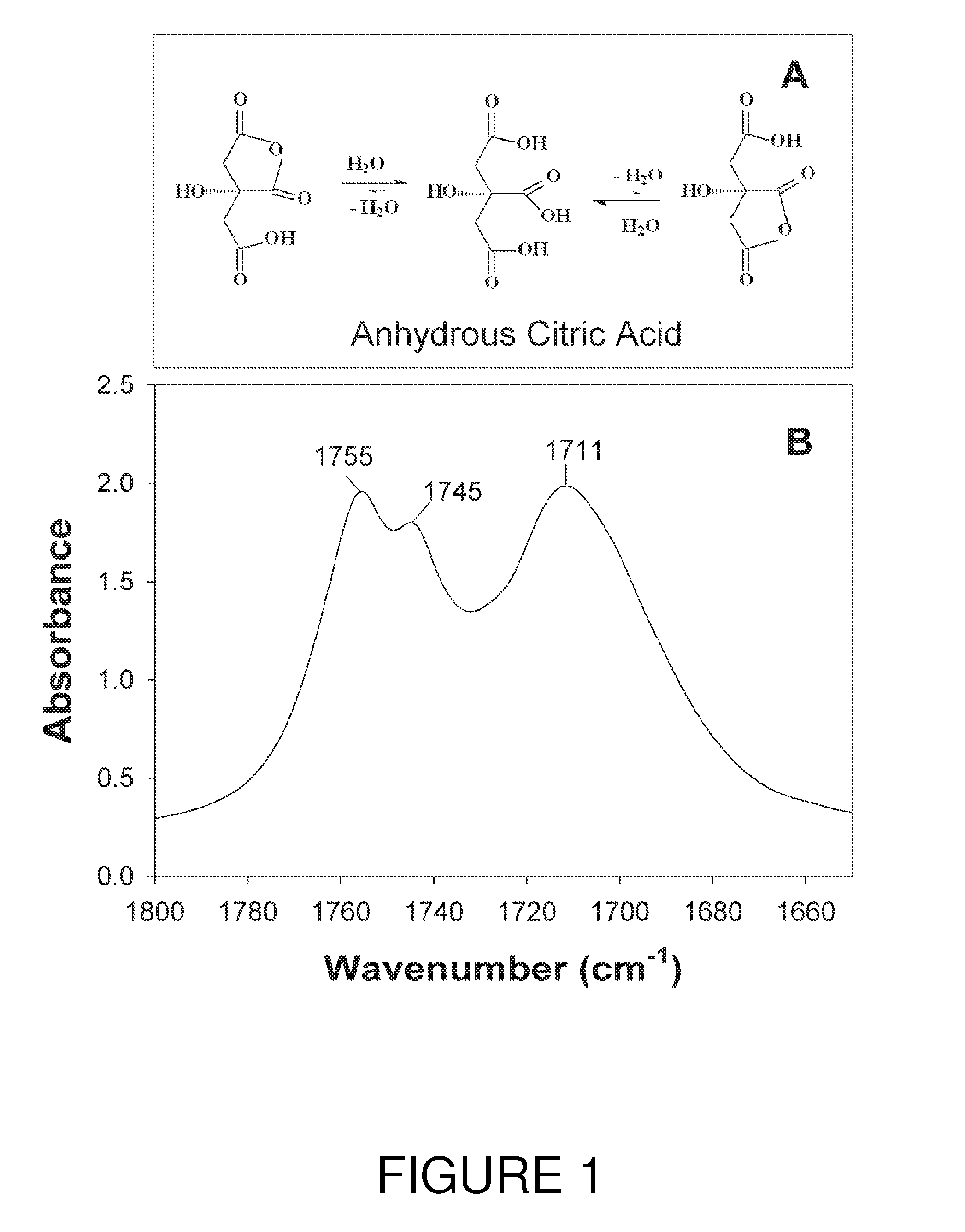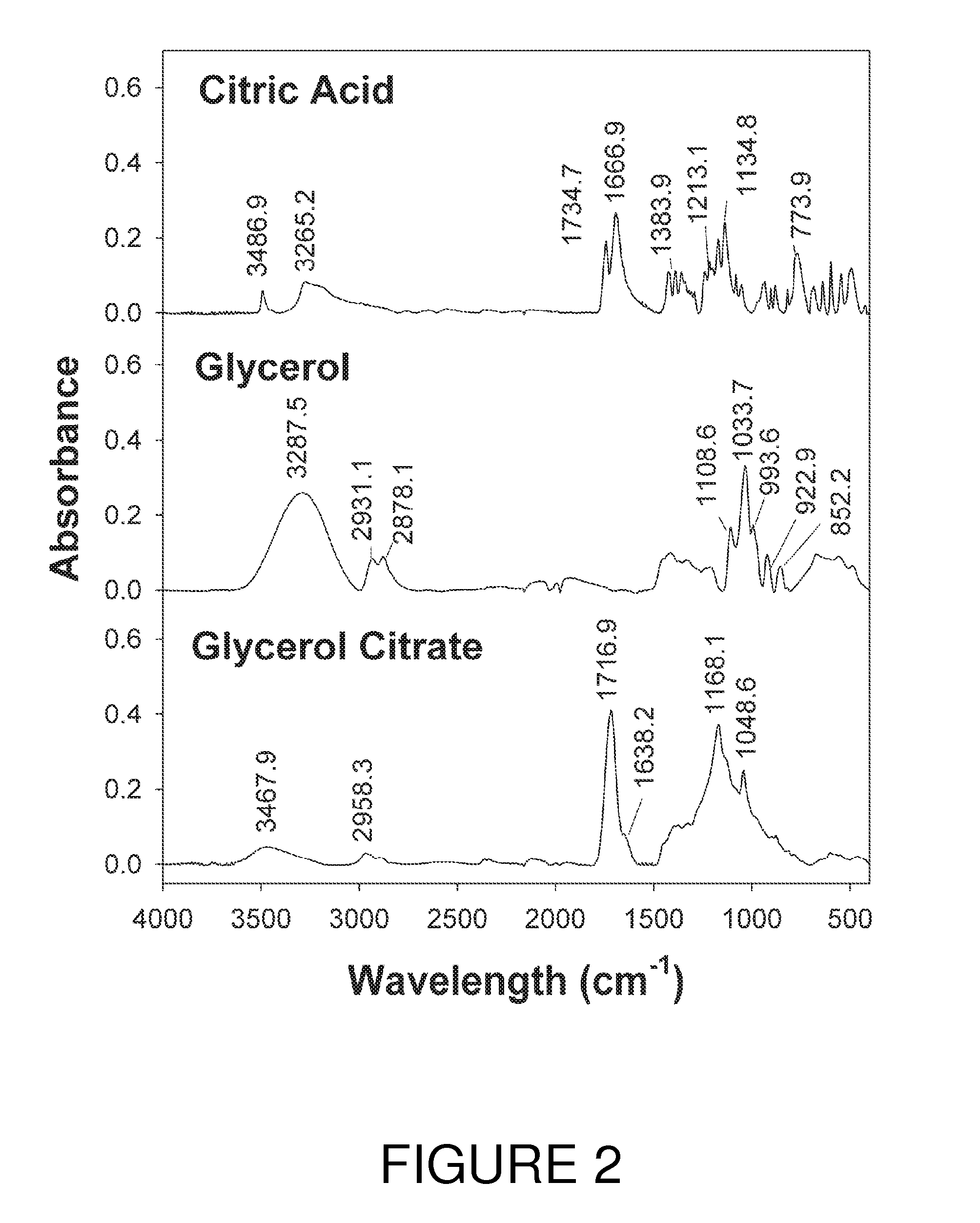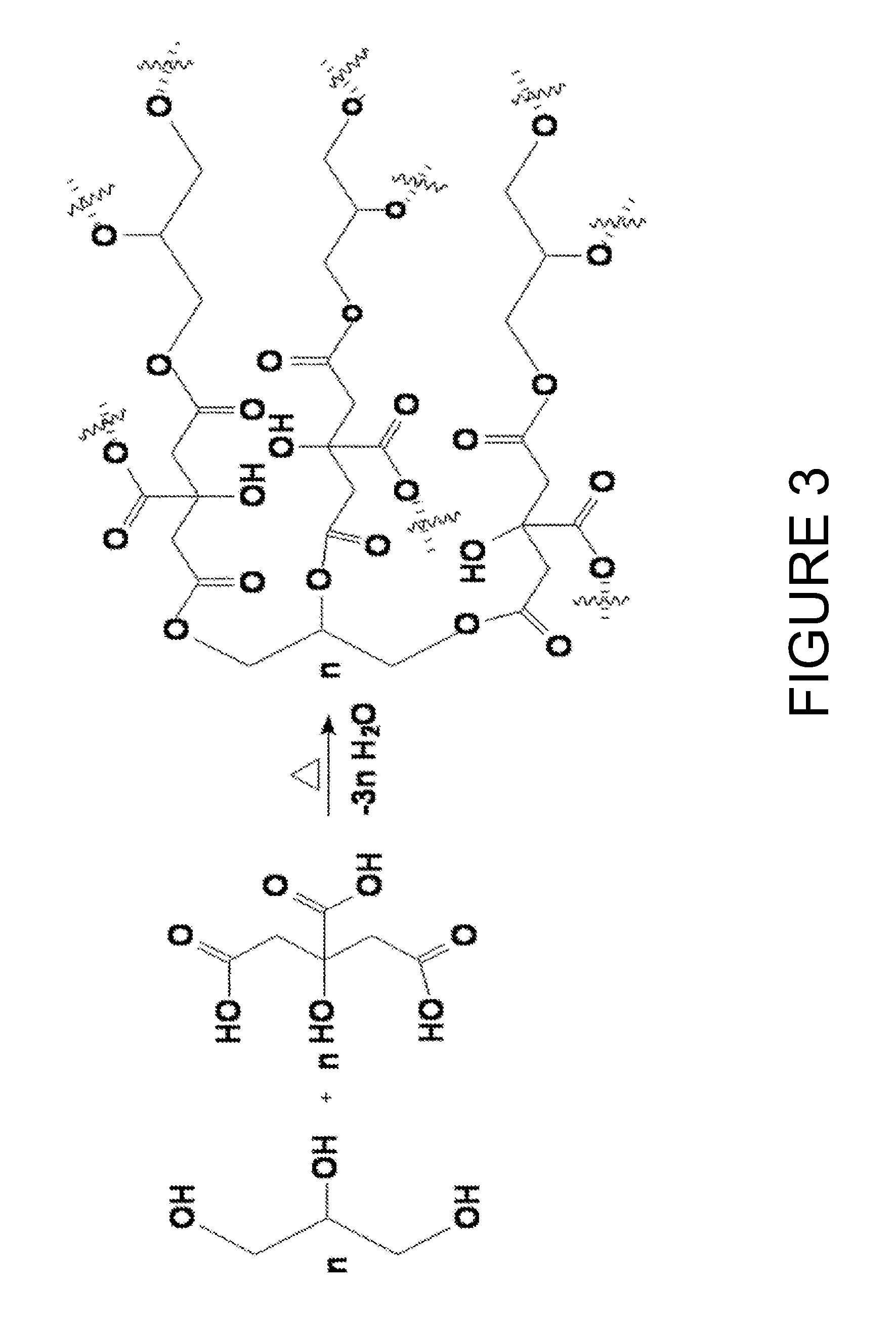Production of stable polyesters by microwave heating of carboxylic acid:polyol blends
a technology of carboxylic acid and polyester, which is applied in the field of polyesters, can solve the problems of high price of traditionally-used non-petroleum-based polymers (e.g., polylactic acid, pla), and is not competitive with petroleum-based polymers, and achieves the effects of rapid and inexpensive production, easy physical and chemical properties variation, and high economic benefits
- Summary
- Abstract
- Description
- Claims
- Application Information
AI Technical Summary
Benefits of technology
Problems solved by technology
Method used
Image
Examples
example 1
[0037]In this example copolyesters of glycerol and citric acid were produced through various heating methods (hotplate heating, autoclaving, oven convection heating, and microwaving) without addition of any external catalysts. The response of various ratios of citric acid and glycerol blends was examined.
Reagents
[0038]Three different anhydrous citric acid sources were employed: Food Grade (Duda diesel LLC, Madison, Ala.), 99% Reagent grade (Sigma-Aldrich, St. Louis, Mo.) and 99.5% Reagent grade (ACROS Organics, Morris Plains, N.J.). Unless otherwise indicated the 99% Reagent grade (Sigma) was employed in all experiments. Glycerol, 99+% (Acros) was employed in all tests.
Preparation of Blends and Experiments
[0039]The following citric acid:glycerol molar ratio blends were prepared for heating tests: 2:1, 1.4:1, 1:1, 0.7:1, 0.5:1, 0.34:1, 0.25:1, 0.16:1, and 0.12:1 respectively. Each formulation consisted of 12 grams of reagents and was mixed thoroughly together by hand with the aid of ...
example 2
[0055]The purpose of this Example was to characterize the physical properties of the citric acid:glyceride polyester foams described above affected by thermal curing.
EXPERIMENTAL
Materials
[0056]Glycerol used was vegetable based, food grade, (99.5%) and obtained from U.S. Glycerin (Kalamazoo, Mich.). Citric acid was anhydrous, granular, food grade (99.9%) and obtained from DudaDiesel LLC (Madison, Ala.).
Equipment and Polymer Sample Preparations
[0057]A 1:1 molar ratio of citric acid:glycerol consisting of 12 grams total was mixed thoroughly together by hand with the aid of a stainless steel spatula within a silicone muffin pan (68 mm diam. outside diam×30 mm H; 55 mm3 cap., Wilton Industries, Woodridge, Ill.). Vessels were microwaved for 60 sec with an Ethos EX microwave Labstation (Milestone Inc., Shelton, Conn.). The microwave was equipped with internal IR-temperature sensor (not used as a feedback control for regulating microwave intensity) and ATC-FO fiber optical probe. This micro...
example 3
[0070]The purpose of this Example was to determine the effect of various dicarboxylic acids as substitutes for and in combination with citric acid to produce the of the di- or tricarboxylic acid:glyceride polyester foams described above.
[0071]Di- or tricarboxylic acid:glyceride polyester foams were produced using oxalic acid, glutaric acid, malonic acid, adipic acid, succinic acid, pimelic acid, suberic acid, azelaic acid, sebacic acid, phthalic acid, isophthalic acid, and terephthalic acid either in place of citric acid or in combination with citric acid. The combinations and the relative amounts of the reactants, by weight, are set forth in Tables 9-11. The polyester foams were produced in the same manner as described in Example 1 and Tables 9A-E (microwave heating times in seconds as indicated), and then cured as described in Example 2 and in Tables 10A-E. Upon completion of curing, the foams were evaluated for appearance texture, weight loss, and size.
[0072]The results are shown...
PUM
| Property | Measurement | Unit |
|---|---|---|
| temperature | aaaaa | aaaaa |
| temperature | aaaaa | aaaaa |
| temperature | aaaaa | aaaaa |
Abstract
Description
Claims
Application Information
 Login to View More
Login to View More - R&D
- Intellectual Property
- Life Sciences
- Materials
- Tech Scout
- Unparalleled Data Quality
- Higher Quality Content
- 60% Fewer Hallucinations
Browse by: Latest US Patents, China's latest patents, Technical Efficacy Thesaurus, Application Domain, Technology Topic, Popular Technical Reports.
© 2025 PatSnap. All rights reserved.Legal|Privacy policy|Modern Slavery Act Transparency Statement|Sitemap|About US| Contact US: help@patsnap.com



